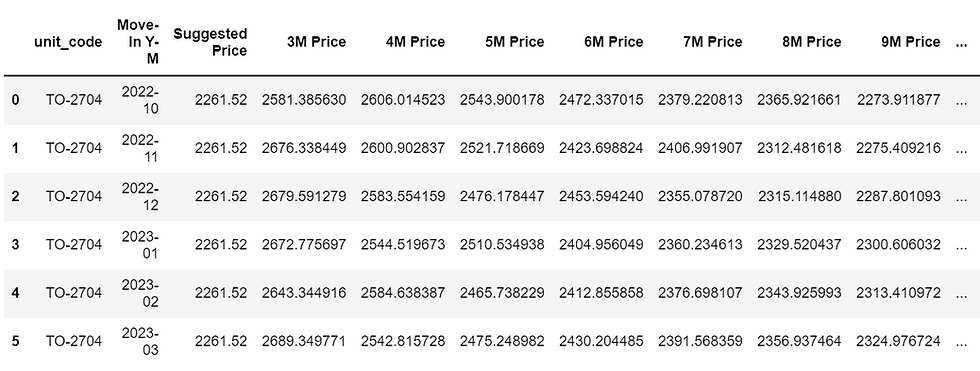How To: HR / People Analytics
- michaelwoolfson
- Apr 14, 2022
- 3 min read
Human capital is one of the key driving forces of success within any company. Undoubtedly, organizations that strategically attract talent, train and retain their employees, and manage capacity efficiently and effectively are at a sizeable advantage in the long term.
HR departments are generating increasing amounts of data within their workforce, but many have failed to realize the true value of these insights. HR professionals are turning to analytics to understand which candidates to hire, which employees are currently succeeding in their roles, and how to best compensate employees to maintain company morale and increase employee retention. It is ideally used in unison with intuition and instinct to make decisions.
HR Key Performance Indicators
Key performance indicators you should be tracking include, but not limited to:
Workforce Demographic
Number of full time employees
Number of part time employees
Total work hours
Average full and part time wage
Hiring
Applications received
Actual vs budgeted cost of hire
New hire quality
Time to fill
Qualified applicant pool
Part time vs full time hires
Performance
Revenue/Employee
Number of sick days
Number of internal/external complaints received
Estimated sick leave cost
Total absenteeism rate
Training
Average headcount/HR employee
Time to competence
Employee satisfaction with training
Training to work hour ratio
Turnover and Retention
Annualized voluntary/involuntary employee turnover rate
Average headcount/manager
Number of internal social events
Overtime hours as a percentage of all work hours
Health and Safety
Number of incidents requiring first aid
Total incident rate
Number of incidents requiring lost time claims
Outside of these KPI’s, HR managers have used more complex analytical methods to derive insights. They have used predictive analysis to predict certain outcomes by using tools such as neural nets and regression models. For example, companies may use such analysis to predict underperforming sales reps within their sales force. It is also used to forecast an issue prior to its occurrence, allowing for capital to be more efficiently allocated on training or reallocating employees, saving the firm money by preventing negative outcomes.
Dashboards are also frequently used as they are an excellent visualization tool that allow HR managers to understand the issues that matter most to their organizations. Senior executives will be able to identify concerning trend deviations in KPI’s such as attrition rates, employee costs, and a better understanding of their employees through employee engagement profiles.
Analytical tools are being leveraged to assess qualitative entities such as Corporate Culture. Given the intangible nature of culture, it is often difficult to assess whether candidates and current employees fit within the management culture. Analytics can be used to better understand corporate culture and any deviations from it. By combining quantitative methods with the qualitative nature of traditional HR analysis, such as onboarding surveys for potential employees, culture surveys for current employees, and exit interviews with former employees, organizations can understand their current cultural situation as well as the drivers of cultural satisfaction. This, combined with visualization tools such as dashboards, allows HR managers and professionals to ensure a cohesive, productive, and satisfied workforce.
Industry Example
Hewlett-Packard (HP), a company employing over 300,000 employees, has always been at the forefront of predictive analytics. They started to utilize analytics within their HR division to address turnover, and found out that their 20% internal turnover rate can potentially lead to a replacement cost of over 150% of the current employees’ annual salaries due to lost productivity and training. For a company of HP’s size, any reduction in turnover would lead to millions of dollars in annual savings.
HP let two of their data scientist create a predictive model that would generate a “Flight Risk” score for each employee, a score that predicts the likelihood of a certain employee’s leaving. They discovered intricate relationships in their findings, such as someone who received a promotion that was not accompanied with a substantial raise was more likely to quit than someone who did not receive a promotion.
Only senior managers were given access to the data due to practical and privacy-related concerns, and they received training on interpreting Flight Risk scores and dealing with the implications.
The combination of being aware of the employees who are at high risk of attrition and understanding the leading drivers of turnover led to sizeable improvements in HP’s HR decision making. Managers were able to intervene to prevent attrition or at least have a mitigation strategy if turnover was unavoidable. This led to over $300 million in savings for the organization, along with improved employee morale.
Conclusion
The benefits of utilizing HR Analytics are clear. Although it may seem like a daunting task to get started, organizations like Advanced Analytics & Research Lab can help you get started by consulting on your current state and challenges, building out solutions, and implementing them throughout your organization. Reach out today to get the benefit of HR Analytics!




Comments